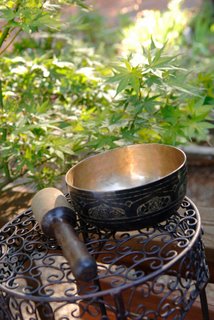
meditation
Meditation isn’t only about achieving peace for oneself!
by Shyalpa Tenzin Rinpoche
It is a misunderstanding to think that the practice of meditation is merely a method for relieving stress and achieving peace for oneself, alone.
In Buddhist tradition, the act of practicing meditation should be approached as a means to benefit others. In the same way, the momentum that grows out of this practice should also be dedicated to the welfare of all beings. Each time you sit down to meditate, make your practice an offering for all beings. Recognize that everyone is looking for ways to find happiness just as you are. Meditation is a means to this end. Sustained meditation practice will bring you joy, and a joyful mind will naturally benefit others. Resolve to meditate with this unselfish attitude.
When we begin meditation, we should first learn how to focus. Some discipline is required in order to be attentive in the moment and experience it fully. Most of the time, we are unable to focus our attention and are easily distracted. Our minds wander, and we are easily mesmerized by our perceptions and thoughts. We have a difficult time remaining focused.
There are many ways to practice meditation. Let’s explore one approach: Sit up straight. When you begin, breathe naturally. Slowly settle into your breathing by counting the in and out movement of your breath 21 times. Touch the tip of your tongue lightly to the roof of your mouth. If you become drowsy, your tongue will drop down and rouse you from your slumber. Raise your tongue to the roof of your mouth again and concentrate.

sitting meditation, a wellness practice
If possible, sit with your legs crossed, keep your eyes open, and look straight ahead, beyond the tip of your nose. I would advise you not to close your eyes. If you were to suddenly encounter a tiger in the jungle and were overcome with fear, closing your eyes would not make the tiger run away. Similarly, when you meditate, closing your eyes will not make your distracting thoughts and feelings disappear. You will be alert and prepared to face any challenge when you keep your eyes open. You may think you can meditate more effectively with your eyes closed, but most likely, you are not meditating better, you are sleeping better.
Once you have adjusted your body and settled into your breathing, focus on a specific object, such as the form of the Buddha. This could be an actual statue or an image visualized in the mind’s eye. You could select one aspect, such as the Buddha’s gentle eyes or his golden color. When you notice that your mind has wandered away from its focal point, gently bring it back. If you find yourself thinking about your stock portfolio or that you forgot to turn on the dishwasher, return your attention to the Buddha’s image. The value of your stock portfolio is a mundane matter and your dirty dishes can wait. The mind is running around like a restless monkey all the time. Obviously, this practice can be quite challenging. Observe how long you can hold the object of your attention without wandering. If you can hold your attention steady for five minutes, you are a great meditator already! Most likely, you will lose your focus, jumping from one thought to the next, like a monkey leaping from tree to tree. Staying with the object without drifting away is very difficult; it will take all of your attention and resolve. Throughout your day, you can practice this meditation technique whenever you have some free time.
Practice meditation for whatever length of time you wish. However, in the beginning, practice for short periods, perhaps just five minutes. After meditating for five minutes, you might feel that you are struggling with your mind. If so, relax and tell yourself, “You spoiled brat, go wherever you like!” Let your mind wander as far as Paris, New York, or Shanghai. You can move your body, stretch, dance, or go a little crazy. Once you feel refreshed, return to your meditation again for five more minutes. Proceed like this—concentrating and then relaxing—for perhaps half an hour to an hour. Practice for whatever length of time you find comfortable, without overexerting yourself. Maintaining unwavering attention for five minutes is much better than getting lost in distraction for five hours.
This basic practice of focusing attention is important, even for the most advanced practitioners. If you allow a glass full of muddy water to sit undisturbed, the dirt will settle to the bottom, leaving a glass of pure water. Practicing this simple technique of focusing and restoring your attention when your mind wanders will pacify your restless thoughts. It will calm your mind, and with sustained practice, you will experience lucidity and pure presence.
When you practice meditation, the trials and tribulations—the highs and lows—of your day-to-day life will not disturb you too much, since your body and mind will be more relaxed. There will be a more intimate connection between your meditation practice and whatever comes up in your life. Even if chaotic or fearsome events turn your world upside-down, you will have more space and less stress. If your life swerves off the road and crashes, the fruits of your practice will act like an airbag, buffering you against serious injury. You will have the strength and clarity to master challenging situations.
Practice by focusing and holding your attention. If you cannot discipline yourself in this way, you could easily find yourself behaving like a spoiled and pampered child who feels helpless when confronted with a challenging situation.
When you develop the capacity to be present, you will respond competently, no matter what the circumstances.
Endeavor to practice some form of meditation each day. Even if you are transacting million-dollar business deals, this will pale in comparison to the rewards of a regular meditation practice. You can live without a milliondollar deal, but you cannot live without inner peace and well-being. So be good to yourself. Make a profound deal with yourself to practice every day. Set aside a little time for meditation, and then gradually spend more and more time practicing. In this way, the truth of the teachings will unfold within the depths of your heart. If you allow these teachings to remain only in your head, you could carelessly misuse the rest of your precious human life. This is not a practice for beginners only. Everyone must master this discipline before they can proceed further in their practice.

Sing Bowl
After meditating, rejoice and dedicate the fruits of your practice to all beings. With joy, rest in a sublime state. Make this aspiration:
“Whatever benefit I have gained from this practice, may the residual effects last for many days, years, and lifetimes. May everyone, including myself, benefit from the wisdom and clarity accumulated in this practice, until all beings attain enlightenment. Whatever merit I have gained, I dedicate it for the welfare of all sentient beings.”
By making this dedication, you will preserve this positive energy, and your practice will grow stronger in the future.
You can draw on this energy for the dual benefit of yourself and others. In the Buddhist tradition, there are three sublime practices:
The first sublime practice is the generation of a compassionate and loving heart, also known as pure intention. We begin each activity with the positive intention that our action will be of benefit to others.
The second sublime practice is the activity or practice itself, which we do mindfully, while remaining in the natural state, free from distraction.
The third sublime practice is the dedication of merit. Merit refers to the wholesome and positive momentum that grows from our practice. We dedicate our most precious essence and all the positive energy that we have accumulated from our practice to the welfare of all beings.
Apply these three sublime practices in all of your activities, even something as simple as drinking a cup of tea. Prepare your tea while generating a compassionate heart, the pure intention to benefit all sentient beings. This is the first practice. Then drink the cup of tea with complete mindfulness. This is the second practice and the core of the three practices. After your last sip, dedicate the enjoyment of your drink for all beings, and pray that they may be liberated from suffering and awaken to enlightenment.
The rays of the sun provide warmth for all creatures without discrimination. We dedicate the virtue of every positive action to the benefit of all beings. In this tradition, we do not hold on to the merit that we have accumulated for our own benefit alone, but instead we dedicate this positive energy so that someday the enlightened qualities of every being will manifest. Finally, the perfect dedication is to dissolve your merit in the unconditional state.

drinking tea as a mindfulness practice
In this way, simply drinking a cup of tea becomes genuine meditation because of the three sublime practices. Always insure that these practices are inseparable from whatever you do. The first and last are quite straightforward. In the case of the second sublime practice, you have a specific target. For instance, if your activity is meditation on the breath, follow your breath attentively, and at the same time be mindful of its ephemeral quality. The three sublime practices are the best way to elevate your thinking and walk with dignity on the path of awakening.
The goal of our practice is to free ourselves from stress and suffering. We cannot actualize this freedom using a purely intellectual approach. We need to experience these teachings directly and embody them in our lives. This is why I strongly recommend the practice of meditation.
As beginners, we must embrace the practice of meditation. Even if the discipline of meditation does not come easily, we should endeavor to practice. We have to tame our neuroses and pacify our restless minds.
Steady discipline, combined with joyful effort, is the best way to respect and care for yourself. As your practice progresses, you will begin to reap the rewards. You will carry yourself in a majestic way and experience the regal qualities of your wakeful nature. Like a king in command of his subjects, you will master your mind and emotions.
Every moment is a new moment, so we need a fresh approach to meditation that can be practiced by everyone, anywhere in the world. Our meditation will be pristine when we recollect, with an open heart, the basic goodness in all beings. There is no time to be narrowminded or territorial, as life is too precious to waste. We should not spoil a single moment with an unwholesome thought. This dynamic form of meditation can be practiced nonstop, so that living itself becomes meditation.

Kids meditation
Moment-to-moment awareness is the supreme form of meditation. All other methods of meditation are steps that lead us toward this all-pervasive awareness. Recognizing the essence of one’s mind and learning to remain in this essence is true meditation. In Tibetan, meditation means “getting used to.” We could say that meditation is not the goal, but a tool that helps us discover or “get used to” the true nature of mind. Once you realize the truth, you no longer need the tool. When resting in the mind’s nature, there is nothing left to meditate on because the mind is no longer distracted! There is nothing more to grow accustomed to. Nonmeditation is the ultimate meditation. Whatever comes, you are capable of handling it because everything is self-liberated as it arises.
If you must have a quiet and secluded place to meditate, your practice is still ordinary. However, with moment-to-moment awareness we can manage any situation. This is what we need the most because life is often chaotic and challenging. We have to survive and navigate the strains and stresses of everyday life. Buddhist practice is not simply a matter of reciting mantras, chanting prayers, and quietly meditating. True practice means learning to handle every situation skillfully.
Whatever you are doing, do it comfortably. Proceed in a relaxed and natural manner. You will experience thoughts arising one after the other. A thought comes and it goes. When you are alert and aware, you will not get lost in your thoughts. It will be clear that you are not your thoughts and that your thoughts do not define you. Thoughts are like the flight of a bird through the sky: the path of the bird leaves no trace. Each thought has no dwelling place or destination. When you train this way, the “possessor” of these thoughts will eventually disappear. At this point, there will be no one to suffer or experience any torment. This is moment-to-moment awareness and the perfection of nonmeditation.
Our Zen Timepiece’s acoustic 6-inch brass bowl-gong clock and timer is the world’s ultimate alarm clock, practice timer, and
“mindfulness bell.”

Zen Timepiece with Singing Bowl, the Ultimate Meditation Timer
Adapted from the book Living Fully: Finding Joy in Every Breath ©2012 by Shyalpa Tenzin Rinpoche. Printed with permission from New World Library. Shyalpa Tenzin Rinpoche is the son of spiritual Buddhists and a renowned Tibetan Buddhist spiritual leader.

Meditation timers and alarm clocks with acoustic chimes
Now & Zen’s Meditation Timer Shop
1638 Pearl St.
Boulder, CO 80302
(800) 779-6383
Posted in mindfulness practice